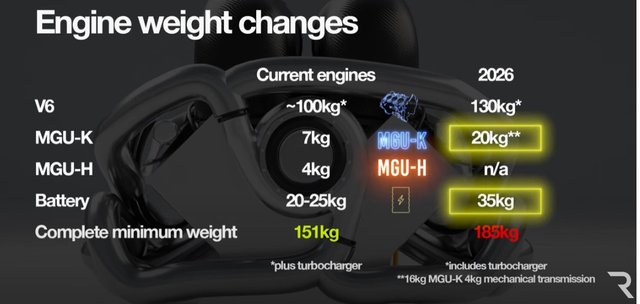I too is a bit lukewarm in regards to these rules. It feels like some of the aerodynamics are compromises for a bad engine. And that would be the active aerodynaimcs that Im sceptical about. And in regards to the active aerodynamics, I feel that it has the potential of being super powerful, when its working. If you have some kind of a problem, maybe a light touch to knock the active aero off in some way, perhaps even making enough damage to the frontwing that you are uncapable of using it, then you are essentially going to have to pit and --- yourself in the process. Because without it you would surely lose to much time.Elite wrote: ↑06 Jun 2024, 18:48I fully agree and can't wait to gloat when we're rightchrstphrln wrote: ↑06 Jun 2024, 17:47My scepticism stems from the fact that I fear F1 is turning into a computer game.organic wrote: ↑06 Jun 2024, 16:45
The FIA have explained this themselves. They need the drag reduction at front and rear in order to prevent drivers from lift and coasting halfway down every straight.
The new engine formula requires significantly less drag and active aero was the way to achieve this without losing too much downforce.
Maybe I'm getting old, but switching back and forth between X and Z mode, in addition to the overtaking button, complicated rules such as the energy release of the vehicle in front decreases after 290 km/h and drops to zero at 355 km/h, while the vehicle behind benefits from an MGU-K override that delivers 350 kilowatts at up to 337 km/h with an additional thrust of 0.5 megajoules...
Honestly?
What's the point of all this?
Since when has racing got better if you have to make the cars even more complex and complicated to operate?
It's not as if other things like engine mapping, brake balance and tyre management don't need any more attention, as the loading functions have to be added!
Anyone who now complains that the drivers have to pay more attention to tyre management than to racing will, I fear, experience races in the future in which management of the MGU-K controlled from the pits leaves even less room for racing.
When it came to making the cars lighter and simpler again, I wasn't talking about what is now being presented.
This new era will be a disaster
I feel like with more things to do, more complexities, there are also more things to go wrong. Wonderful it might be if it works correctly, all the time. But if anything goes wrong, there is a big chance that you lose a lot of laptime because of it.
In an ideal scenario, it looks good, perhaps. We have closer racing, we have many buttons and tricks to use for strategy purposes. But... thats the ideal scenario. We have seen that DRS was a failure. At least in my opinion. It rarely worked as intended. Either you flew by at the speed of light, or you were incapable of passning. In fact, I would even argue that DRS trains are worse than trains without DRS. Because you have less drag to punch a hole into, negating the slipstream effect. But also you arrive at the corner faster, making you have less time to make the actual overtake.
I feel like these regs were compromised by the engine and the fact that f1 wanted more engine manufacturers. Getting more engine manufacturers in itself is obviously fantastic. But it feels like a shoddy engine to comply with engine manufacturers and their desire for transition into road technology has made it so that other compromised aerodynamics were needed to not fully botch the new regs. So in totality it feels like a mismatch of compontents to make it feel like 'meh'.
Obviously I have to take more time into looking at it, since its all fresh for everyone and not everything has been revealed totally. But my inital impression is lukewarm.

